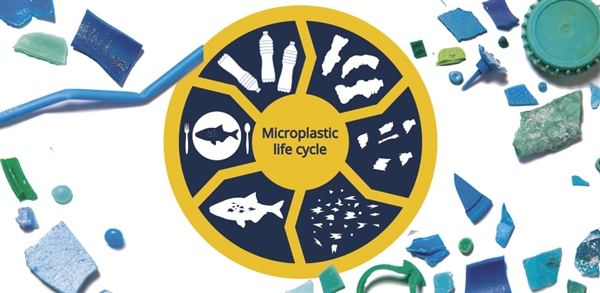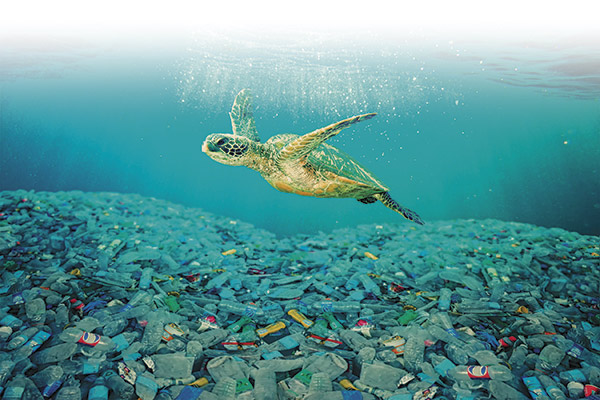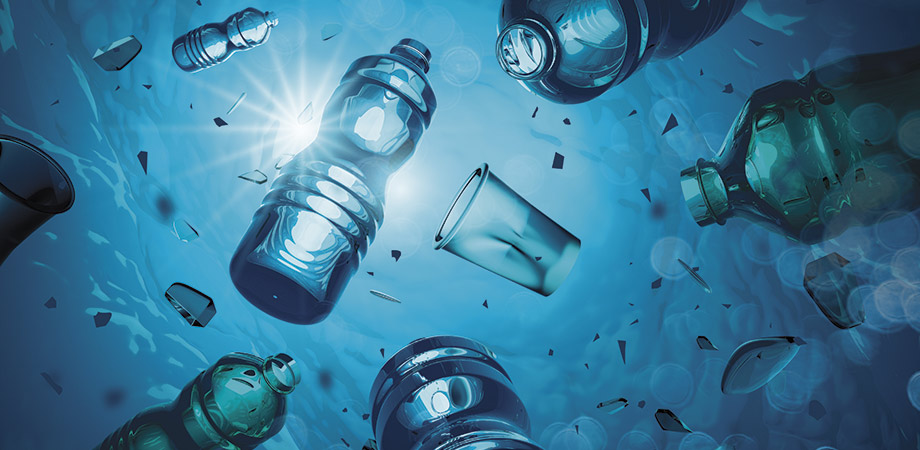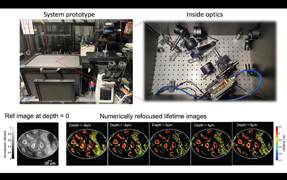From the deepest ocean trenches to the soaring summits of the highest mountains, and from the intestines of the water flea to the inner chambers of our own lungs, minuscule fragments of plastic—too small to be seen unaided—are quietly establishing a pervasive empire.
The National Oceanic and Atmospheric Administration categorizes any plastic particles smaller than 5 mm as “microplastics.” Despite their unifying diminutive size, these microplastics display an impressive diversity in appearance. They might resemble anything from irregularly shaped entities that look like potatoes to nearly perfect spherical beads, or elongated fibers. They could belong to an extensive array of plastic types, and their surfaces might be coated with industrial resins, organic debris, slimy biofilms, or algal growth. More concerning, these tiny particles have a propensity to attract and absorb bacteria and toxic substances, including heavy metals, making them potential carriers of harmful pollutants and diseases.
Unsurprisingly, the heterogeneity of microplastics presents significant challenges. Currently, there is no universal method capable of swiftly and efficiently detecting and quantifying microplastics, particularly in situ measurements, such as in the turbulent waters of a river stream or within the complex conditions of an industrial wastewater plant. The urgency for reliable, robust, and reproducible detection methods grows daily, as we strive to understand and address the escalating issue of microplastic pollution.
Microplastics pose a range of environmental problems that affect ecosystems in various ways. They accumulate in bodies of water, soil, and the air, disrupting natural processes and harming both terrestrial and marine life. Additionally, microplastics can act as carriers for harmful pollutants, potentially entering the food chain and posing health risks to people who consume contaminated seafood or fresh water. Their impact on ecosystems and human health underlines the urgent need to address the challenges in order to safeguard both our environment and our health.
The field of microplastic research is still nascent, however, and we need to swiftly gain insights into the interactions of microplastics with animals, the atmosphere, and indeed, ourselves.
Fortunately, photonics researchers developing cutting-edge microscopy systems are stepping up to meet at least some of the challenges. Emerging innovative techniques like digital holography, laser direct infrared (LDIR) imaging, and quantum photonic sensing promise to be efficient, portable, and dependable alternatives to traditional methodologies like Raman and Fourier transform infrared (FTIR) spectroscopy.

“The common strategy is to identify obvious microplastics with a microscope,” says Li Wenjun at China’s Sun Yat-sen University. “However, the composition of the microplastics cannot be determined by using this quick but rough method.”
Even though standard lab techniques have high sensitivity and accuracy, they are time-consuming, need sample preparation, and require trained personnel.
The necessity of sample preparation serves as a considerable hurdle for various microscopic systems. To comprehend this, we need to dive into the life cycle of plastic, a material—as the name suggests—that is as malleable in form as it is in function.
Nearly all plastics are petroleum-based polymers. Polyethylene terephthalate, or PET, is the most abundantly produced plastic globally, used for transparent plastic water bottles, soda containers, and a host of cosmetic products. Another variety, polypropylene, finds widespread use in packaging, the automotive industry, and textiles, while polyvinyl chloride is a staple in the construction sector. The demand for these and other types of plastics is staggering. For context, the US alone churned out 36 million tons in 2018, according to the Environmental Protection Agency, part of a steady, upward production trajectory that began in the 1960s.
When somebody drops a used plastic bottle into the sea or a river, the ceaseless action of waves, sand, salt, and sunlight whittle it down into myriad smaller fragments. Other forms of plastic, such as the tiny particles that are part of the ingredients in many face creams and shampoos, also make their way to the sea. These microplastics are carried along ocean currents and eventually accumulate in colossal oceanic vortexes known as gyres. Depending on their density, some plastics float on the surface, while the denser counterparts descend to the ocean floor.
Microplastics that float on the surface in marine environments can become coated in algae or moss, or even serve as egg-laying sites for various insects. These events increase their density, prompting them to sink and initiate a cycle of bobbing up and down through the water column.
Therefore, a scientist studying microplastics must embark on a series of complex tasks. The initial challenge involves isolating microplastics from the sea or turbid water—a labor-intensive endeavor. Next, they need to distinguish these particles from minerals, other trash, and organic materials. Furthermore, each microplastic must be characterized by its size, shape, and chemical composition, which requires stripping away any accumulated organic layers. Each step is rife with difficulties and potential missteps, underscoring the reality that microplastic measurement isn’t a solitary task, but rather, a meticulously coordinated sequence of procedures.
The initial procedure typically involves several rounds of filtration, succeeded by a drying and purification process. Any residual water and organic materials post this stage are eliminated through the application of peroxides and enzymes.
The purified particles are then visually inspected under a microscope, a step that allows for the determination of their shape and size. Chemical composition is deduced by examining their spectra, typically employing tools such as a Raman spectrometer or an FTIR microscope. Hydrocarbons typically have spectral fingerprints in the mid-infrared (mid-IR) region which can identify the variety of plastics present. “We can only be certain a particle is plastic if it is identified to polymer type,” says Alice Horton of the National Oceanography Center in the UK.
While these instruments can themselves be in the range of hundreds of thousands of dollars, the actual expenditure lies in the process of sample preparation, which, according to Jürgen Schnekenburger at the University of Münster, Germany, can span a duration of two to four weeks. Additionally, these systems are too big to be used outside of the lab, which rules out on-site sample testing.
In addition, Wenjun points out a potential pitfall with current methods of analysis: “There may be some refraction errors when using this method for irregularly shaped microplastics, leading to the generation of inexplicable spectra.” In other words, squiggly bits can give false readings.
More recent technologies, such as the LDIR chemical imaging system, mitigate this challenge by employing a quantum cascade laser to quickly and automatically characterize microplastics. The laser performs a rapid raster scan across the entire surface at specific wavenumbers, enabling the instrument to promptly locate microplastic particles anywhere on the sample. Wesam Alwa, an application scientist at Agilent Technologies explains, “This cutting-edge system also incorporates two cameras to capture high-quality images of microplastics which helps with identifying the size and shape of microplastics.”
Once the particles are located, the ultrabright laser sweeps through the infrared region to provide a molecular spectral signature that is then compared with a microplastics library to identify the type of plastic. The advantage is that scientists can sweep through a much larger area in a shorter amount of time.
“LDIR can characterize microplastics isolated from freshwater as well as seawater when proper and efficient microplastic isolation methods have been applied,” says Alwa. He explains that LDIR has been used to identify microplastics isolated from different environments, such as sediments, river water, groundwater, and agricultural soil. It’s even been recently used to identify microplastics isolated from bottled drinking water and infant formula.
This brings fast, discrete frequency-imaging capability and allows much greater speed of operation. Many molecules of interest have one or two absorption peaks that can differentiate them from others present in a sample. Imaging these only can allow this sort of work to be done much faster. This is indeed an improvement from traditional FTIR where the full spectra from every point on a particle needs to be studied.
However, like both Raman and FTIR, the LDIR is also a laboratory measurement that needs extensive sample preparation and cleaning.
Digital holography is pioneering a new frontier, standing out as one of the initial lab-on-a-chip systems specifically tailored for microplastic measurement. Like its holographic counterparts, this technique creates real-time 3D imagery of microplastics as they maneuver through microfluidic channels.
To understand how digital holography works, imagine light from a laser being divided into two paths. One part of the light, the object beam, interacts with microplastics. The other, the reference beam bypasses the sample. When the two beams reunite on a digital sensor, they form an interference pattern, a complex arrangement of light and dark areas. This pattern contains both the amplitude and phase of the light reflected from the microplastics, capturing more information than obtainable by other methods.
With the power of computational methods, this digital hologram can be reconstructed as a 3D image of the original microplastics. What sets digital holography apart is its ability to visualize the depth and intricate 3D structures of microplastics in real time as they flow through microfluidic channels. This helps identify and characterize microplastics easily at any location of our convenience.

In their presentation at the 2022 SPIE Photonics Europe conference, Vittorio Bianco at Italy’s Institute of Applied Sciences and Intelligent System and his team discussed successful fusing of machine learning with digital holography They distinguished 5,000 microplastics of varying shapes and sizes, made from five different types of plastic, from amidst thousands of marine diatom samples.
It's crucial to highlight a limitation of digital holography: It serves purely as an imaging technique. By depending on visual cues from microplastics for identification, it bypasses the tracking and recognition of chemical signals that spectroscopic methods offer. So, while it provides valuable visual data, it may not supply the complete picture.
The future may lie in state-of-the-art quantum photonics-based detectors. By merging quantum mechanics with spectral signatures, these devices allow the microplastics to be probed directly without interference from water or organic contaminants.
In this method, a 720-nm laser beam is split through a nonlinear crystal, generating two distinct beams. What sets this approach apart is the quantum entanglement of the photons in the beams, meaning that any alteration to one photon is instantaneously detected in its entangled counterpart. While one beam resides in the mid-IR range, the other resides in the near-IR range.
As the mid-IR beam traverses the sample, it interacts with the chemical bonds present in the plastic, leading to absorption and the emergence of a distinctive spectral signature. Interestingly, the changes occurring in this beam are observed in the near-IR beam. This mitigates the potential influence of extraneous signals to which mid-IR is more easily affected, thus ensuring a cleaner and more precise detection process.
At the 2023 SPIE Photonics West symposium in San Francisco, Schnekenburger showcased some prototypes being tested in Europe. While these models currently require two to four weeks to complete their analyses, he envisions a future where the entire process can be accomplished in less than a day.
An accurate, robust, and portable microplastic measurement system would hold immense value, offering profound insights into the pervasive issue of microplastics and their impact on the food chain. Moreover, such a system could prove indispensable as governing bodies, including the European Union, contemplate the implementation of regulations concerning microplastics. By providing reliable and comprehensive data, a dedicated microplastic measurement solution would support informed decision-making, facilitate effective monitoring, and contribute to the development of appropriate policies aimed at mitigating the detrimental effects of microplastics on our environment and ecosystems.
The remarkable advancements in photonics that have facilitated the development of spectroscopes, LDIR, digital holography, and quantum sensing therefore hold tremendous technological and societal significance.
Nevertheless, it is essential to emphasize that the challenge of microplastics lacks a definitive solution.
As Horton aptly states, “I don't believe there is one novel method that will solve the problem of existing plastics in the environment. With an estimated 500 million tons of waste plastics already present, the scale of the issue makes any cleanup or biodegradation efforts seemingly insufficient to bring about a substantial impact.”
These remarks emphasize the scale and complexity of the microplastic problem, highlighting the crucial need for diverse approaches and significant systemic changes to address this ongoing environmental issue.
Vineeth Venugopal is a science writer and materials researcher who loves all things and their stories.
| Enjoy this article? Get similar news in your inbox |
|




